Guide to Replacing the Lenovo 300e Chromebook Screen
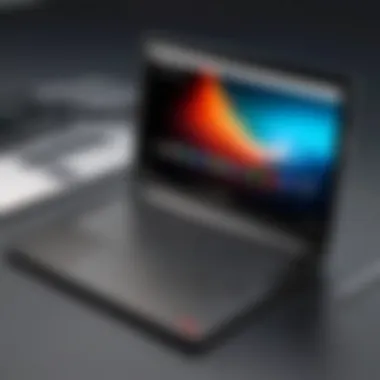
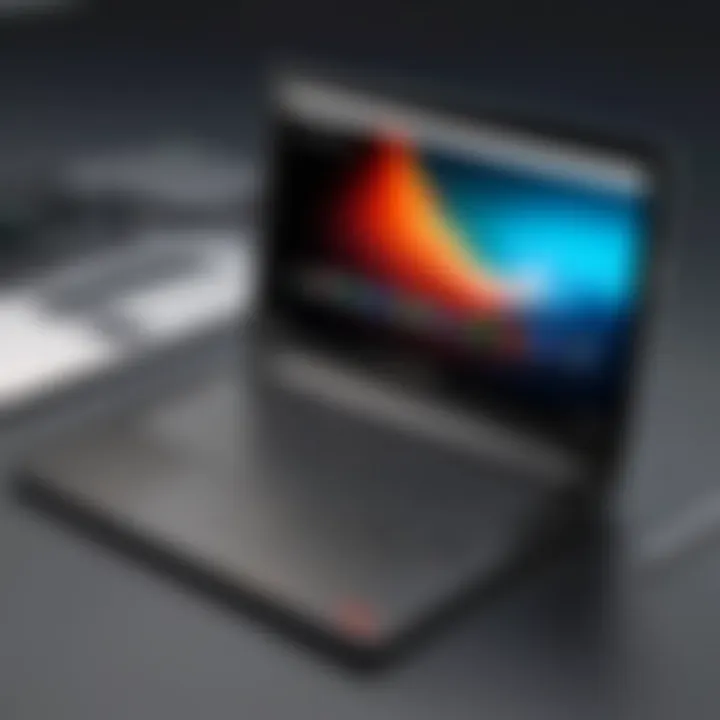
Intro
In a world that increasingly relies on technology, having a reliable device like the Lenovo 300e Chromebook 2nd Gen can significantly enhance productivity and learning experiences. However, like any gadget, it is not immune to the wear and tear of daily use. Among the common issues users might face, a damaged screen stands as one of the most frustrating. Whether it's due to accidental drops or the gradual degradation of display quality, knowing how to replace the screen can save both time and money.
This comprehensive guide addresses the need for understanding and executing a screen replacement for the Lenovo 300e Chromebook 2nd Gen. By delving into the specifics of this process, we aim to empower users with the skills and confidence they need to tackle repairs at home. Furthermore, this guide provides insights on the tools required, the most efficient step-by-step methods for screen removal and installation, and tips to maintain the integrity of your new screen.
Whether you're a tech enthusiast who enjoys getting hands-on or a pragmatic user looking to breathe new life into your device without shelling out cash for professional repairs, this guide caters to a wide audience. Prepare to explore every corner of screen replacement, ensuring that your Chromebook remains functional and efficient for years to come.
Understanding the Lenovo 300e Chromebook
The Lenovo 300e Chromebook 2nd Gen is more than just a device; it's a gateway to productivity and education. Understanding what this machine brings to the table is essential for anyone looking to replace its screen effectively. This Chromebook is built with students and professionals in mind, offering an array of features that facilitate both learning and communication.
Why is it important to understand this device? Knowing the ins and outs of the Lenovo 300e Chromebook helps you not only during a screen replacement but also in troubleshooting other potential issues that may arise. If you’re well-acquainted with its features and specifications, you’re more likely to diagnose problems with ease, leading to a smoother repair process. This article explores theoretical and practical aspects, guiding novices and experienced users alike through the intricacies involved in screen replacement.
Overview of 2nd Generation Features
The Lenovo 300e Chromebook 2nd Gen comes packed with features designed to enhance user experience. One standout characteristic is its rugged design, aimed at surviving the wear and tear of daily use, making it ideal for students. The device typically displays a bright 11.6-inch IPS screen that delivers sharp visuals, crucial for engaging in online classes or presentations.
In terms of spec, the Chromebook is powered by Intel processors that strike a balance between performance and efficiency. With various configurations available, users can opt for models equipped with Intel Celeron or even Intel Core processors, allowing flexibility based on needs. It also sports USB-C ports for fast data transfer and charging, highlighting its versatility in connectivity. These features are pivotal to understanding the overall functionality, especially when handling repairs. You wouldn't want to upgrade incorrectly and end up with mismatched components.
Common Uses and Applications
The Lenovo 300e Chromebook 2nd Gen finds its place in numerous settings.
- Education: It's widely adopted in schools for online assessments and interactive learning.
- Productivity: Professionals utilize it for cloud-based applications, as the Chrome OS is exceptionally efficient in executing light tasks, such as document editing or data management.
- Entertainment: While it sets its sights primarily on work, you can also enjoy streaming and light gaming, depending on your expectations and hardware.
In the process of replacing the screen, it's good to note how users engage with the device. For example, a teacher might frequently flip the screen for collaborative group work, which can affect how a new screen should be installed. Each application contributes uniquely to making this machine essential, further validating the need for proper maintenance to ensure its longevity.
Understanding these aspects lays a solid foundation for navigating the complexities of the screen replacement procedure and troubleshoots potential issues with greater assurance.
Screen Specifications
Understanding the screen specifications is vital when it comes to replacing the screen on the Lenovo 300e Chromebook 2nd Generation. Specifications not only determine the quality of the display but also impact how effectively the device performs in various tasks. In this section, we will explore two key aspects of the screen specifications: display type and resolution, as well as touchscreen capabilities. These elements play a significant role in your overall user experience.
Display Type and Resolution
When discussing display type, it’s crucial to know that the Lenovo 300e Chromebook 2nd Gen ideally uses a HD IPS display. This means that the screen offers In-Plane Switching (IPS) technology, providing better color accuracy and wider viewing angles compared to other types like TN (Twisted Nematic). An IPS display is particularly beneficial for tasks requiring detailed visual presentation, such as graphic design or watching high-definition videos.
Resolution, measured in pixels, defines how clear images and text appear on the screen. The Lenovo 300e Chromebook comes with a 1366 x 768 resolution, which, while not the highest on the market, still serves typical educational and productivity needs well. For most users, this resolution strikes a fair balance between clarity and battery optimization, though avid gamers or multimedia creators might wish for something sharper.
A higher resolution screen makes for a crisper viewing experience, but it could also drain the battery faster and might require more powerful hardware to deliver smooth graphics. Always consider your priorities when looking for screen specifications – do you need clarity at the cost of battery life, or is efficiency more critical?
Touchscreen Capabilities
The Lenovo 300e Chromebook is equipped with touchscreen capabilities, which sets it apart in functionality. This feature is particularly useful for educational environments where students might want to interact with their devices more intuitively, such as drawing, note-taking, or navigating apps.
Not all touchscreen technologies are created equal. Users should note that the screen utilizes capacitive touch technology, which enables quick and responsive touch actions. It detects touch through changes in electrical charge and tends to perform better than resistive technology found in older devices. This is especially noticeable when using styluses for writing or drawing.
However, there are a couple of considerations to keep in mind:
- Durability: Touchscreens can be more susceptible to scratches. Using a screen protector might be a wise choice to prolong its life.
- Compatibility: Ensure any replacement screen reflects the essential touchscreen capabilities, as not all models come with this feature.
Ultimately, understanding display type, resolution, and touchscreen capabilities equips users to make informed choices when replacing the screen on their Lenovo 300e Chromebook. It ensures a successful upgrade that not only resolves any issues but enhances the overall usability of the device.
"The screen of your device is more than just a piece of hardware; it defines how you interact with technology daily."
Considering these specifications during the replacement process can ensure that the new screen meets your expectations and keeps your device functioning smoothly for years to come.
Reasons for Screen Replacement
Understanding the reasons behind screen replacement on the Lenovo 300e Chromebook 2nd Generation is pivotal for both maintenance and functionality. Over time, devices are subject to wear and tear, and the screen often bears the brunt of these mishaps. Here, we will delve into the main reasons for replacing the screen, focusing on the implications of physical damage and performance issues.
Physical Damage
When it comes to the physical state of a Chromebook screen, there’s quite a bit that can go wrong. A common sight is the cracks that can emerge from a drop or hit. Even a minor impact can leave a mark, turning what was once a pristine display into a shattered puzzle of glass. Not only does this detract from the aesthetic appeal, but it can also impede functionality. A cracked screen often results in parts of the display becoming unreadable, leading to frustration when trying to use applications or read texts.
However, it’s not just the cracks to worry about. Scratches can accumulate over time, possibly obscuring content during use. These scratches, while they might not seem serious at first, can affect your viewing experience and lead to eye strain after extended periods.
Another aspect to consider is the presence of water damage. A spilled drink or a sudden rain can wreak havoc on electronics. Liquid can seep into the internal components, leading to potential shorts or malfunctions that could necessitate a new screen altogether. Addressing these issues promptly is critical to prolonging the overall lifespan of your device.
"Replacing a damaged screen swiftly can prevent further issues and lay the groundwork for effective device functionality."
Performance Issues
Physical damage isn’t the sole reason for a screen replacement. Performance issues also play a significant role. You may notice that your screen has started to flicker or that colors appear distorted. Often, these glitches are tied to the hardware supporting the display rather than just the screen itself. An erratically functioning screen can manifest through unresponsiveness or erratic touch detection, creating frustrations that go beyond simple aesthetics.
Another performance concern is the viewing angles. If you find that the screen appears washed out or loses clarity when viewed from certain angles, it’s a signal that the display might be nearing the end of its usefulness. In such cases, users will likely notice colors degrading at an alarming rate, forcing them to squint or adjust their positions frequently.
Sometimes, it’s not the screen itself but the connection to the motherboard that causes the issues. Loose or damaged connectors can lead to intermittent display issues. This is often a hidden problem that requires troubleshooting and might ultimately point to screen replacement as the only solution available.

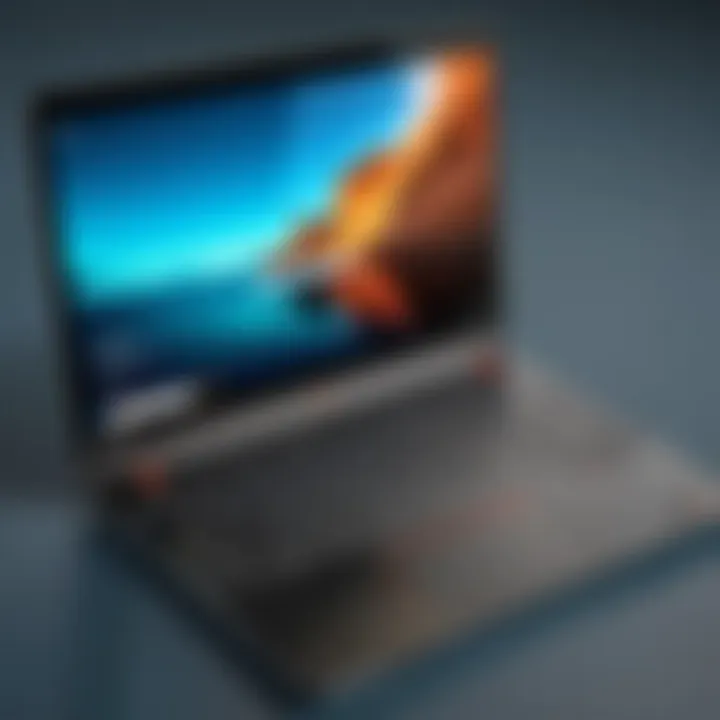
In summary, recognizing the underlying causes for screen replacement can save time and enhance usability. Whether dealing with physical damage or performance-related concerns, being proactive ensures a smoother experience with your Lenovo 300e Chromebook 2nd Gen.
Essential Tools and Materials
When it comes to replacing the screen on your Lenovo 300e Chromebook 2nd Gen, having the right tools and materials is like having a good map for a treasure hunt. Without them, you might find yourself wandering in frustrating circles. The importance of gathering these essentials cannot be overstated; it lays the groundwork for a successful project that is both efficient and safe.
Screwdrivers and Fasteners
To start with, a set of screwdrivers is paramount. Not just any screwdrivers will do; you need ones that fit neatly into the tiny screws that hold the screen in place. A Phillips #0 or #00 screwdriver should cover most screws you’ll encounter. These are much smaller than regular screwdrivers, so having a precision kit handy is a wise choice.
You might not realize how crucial good screwdrivers are until you're fumbling with a worn-out one, stripping screws in the process. This can lead to headaches, both literally and figuratively, when the replacement turns into an unintentional DIY disaster.
Most likely, you'll be using screws of different types and lengths, which means you might come across electronic fasteners such as Torx screws too. If you do, a Torx screwdriver set is helpful. Ensure that the tips are magnetic. This simple feature makes picking up dropped screws a breeze—no more crawling around under the desk!
Also, don't forget about the importance of having a small container or magnetic tray to keep your screws organized. Losing just one tiny screw could delay your screen replacement, turning a one-hour task into an all-day affair.
Screen Replacement Kit Overview
Investing in a screen replacement kit can really pay dividends. These kits often come with all the necessary tools and components you’d need for the job, including a variety of screwdrivers, adhesive strips, and cleaning wipes. It’s much easier to buy a kit than to gather everything separately, which may lead to costly oversight.
A typical screen replacement kit might include:
- Replacement Screen: The star of the show! Ensure it’s designed specifically for the Lenovo 300e Chromebook 2nd Gen.
- Adhesive Strips: Necessary for securing the new screen in place, since you want it to stick like glue—not falling off when you least expect it.
- Spudger Tool: It’s a plastic tool that helps pry open the device without damaging it. A vital player in your toolset.
- Cleaning Cloth: For that pre-installation wipe down, since a smudgy screen spells disaster.
When you purchase a quality replacement kit, you often save time and eliminate the hassle of running to the store to fix mistakes made with improper tools. Plus, this assurance provides peace of mind, which is invaluable during any DIY project. It’s all about making the process smoother and mess-free.
Remember: Proper tools not only make your task easier, but they also enhance the quality of your repair. A dedicated screen replacement kit ensures that you have what you need right at your fingertips.
Preparation for Screen Replacement
Preparing for the screen replacement of the Lenovo 300e Chromebook 2nd Gen is a crucial phase that can significantly influence the success of the task at hand. This preparation isn’t merely about gathering tools and materials; it sets the stage for a systematic approach that minimizes potential pitfalls. When gearing up to replace the screen, specific elements deserve attention to ensure that everything proceeds smoothly and efficiently.
Safety Precautions
First and foremost, safety should never take a backseat. Before diving into the replacement process, it’s vital to take some precautionary measures. Here are a few recommendations to keep in mind:
- Always power down the device and remove it from the power source. An energized Chromebook can lead to accidental shorts and other hazards.
- Wear protective eyewear to shield your eyes from any small, dislodged components during the disassembly process. Even a tiny piece can be a real nuisance if it gets in your eye.
- Use an anti-static wrist strap to facilitate grounding, reducing the risk of static electricity damaging sensitive internal components. You might not see it, but static can cause real trouble.
By adopting these straightforward precautions, you can reduce the likelihood of accidents occurring during what should be an educational and hands-on experience.
Backing Up Important Data
Secondly, backing up crucial data is more than just a good practice; it’s imperative. Although the physical act of replacing a screen might seem straightforward, the truth is that hardware issues can sometimes lead to unexpected complications. Here are some practical tips for an effective backup strategy:
- Utilize cloud storage solutions such as Google Drive or Dropbox. Placing important documents and files online protects them from unintended loss or corruption.
- Create a physical backup using an external hard drive or USB flash drive for things that just can't afford to be lost.
- Don't forget to sync any settings or bookmarks, especially if you’re using the Chromebook as your primary device.
Taking the time to secure your data can save a world of heartache in case things don't pan out as intended.
Step-by-Step Screen Replacement Process
Replacing a screen on your Lenovo 300e Chromebook 2nd Gen may seem like a daunting task, but it is an essential skill for anyone looking to extend the lifespan of their device. This process not only empowers you to fix minor damages but also enhances your understanding of how your device works. Knowing how to replace the screen yourself can save you money and can be extremely satisfying. Furthermore, as technology is evolving so quickly, being familiar with repair procedures can keep you ahead of the game in maintaining your Chromebook's functionality.
Removing the Existing Screen
Before diving in, it is crucial to gather all necessary tools to ensure a smooth transition. You’ll need a set of screwdrivers with magnetic tips to avoid losing any screws.
- Power Off the Chromebook: Always start by turning off the device completely, unplugging it from the charger, and if possible, removing the battery if it's still accessible. This step is vital to prevent any electrical hazards.
- Disassemble the Bezel: Locate the screws along the perimeter of the screen bezel. Carefully remove these screws using the appropriate screwdriver. Gently prying the bezel off can often be done with a plastic spudger to avoid damage to the frame.
- Disconnect the Existing Screen: Here comes the trickiest part of the job. You will find an array of screws securing the LCD to the laptop. Keep a close eye on the connector ribbon which links the screen to the motherboard. Gently lift it away by pressing the lever on the connector to avoid damaging the cable. The existing screen can now be removed entirely.
Installing the New Screen
Installing the new screen is where the fun begins. The precision of this stage is critical, so take your time and ensure every step is done correctly.
- Position the New Screen: Align the new screen with the hinges first. It’s important to be careful and steady at this point so that you do not damage it.
- Reconnect the Cable: Attach the screen’s ribbon cable to the motherboard. This connection must be secure to ensure that power and data flow to and from the screen. You should hear a gentle click when it's fitted snugly in place.
- Secure the Screen: Replace the screws that hold the screen in position. Ensure they are finger-tight but avoid overtightening them as this may cause stress on the bezel or screen.
Reassembling the Chromebook
Reassembling your Chromebook could be a walk in the park, or you might face a few hiccups. Nonetheless, it’s vital to follow steps meticulously to ensure everything is back in place.
- Attach the Bezel: Once the screen is securely installed, it’s time to put the bezel back on. Gently press it until you hear a satisfying snap into place.
- Replace Remaining Screws: Don’t forget the little screws! They hold everything together, preventing any loose parts. Go through your work area and make sure there are no screws left behind.
- Final Check: Double-check that the new screen is seated well in the frame, and your bezel is secure before powering the device back on.
By taking these steps, you will not only complete the screen replacement but also have a clearer understanding of your device. This will lead to better care and fewer problems in the long run.
Testing the New Screen
After the hard work of replacing the screen on your Lenovo 300e Chromebook 2nd Gen, the importance of testing the new screen cannot be stressed enough. This critical phase ensures that everything is functioning as it should, preventing any future headaches caused by oversight. You wouldn’t want to put in all that effort only to find out something went awry, right? Makes sense to double-check things before calling it a day.
Initial Power-On Test
Start by powering on your Chromebook. This step is straightforward yet essential. When you switch it on, keep an eye on several factors:
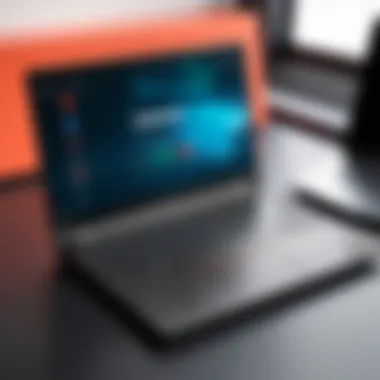
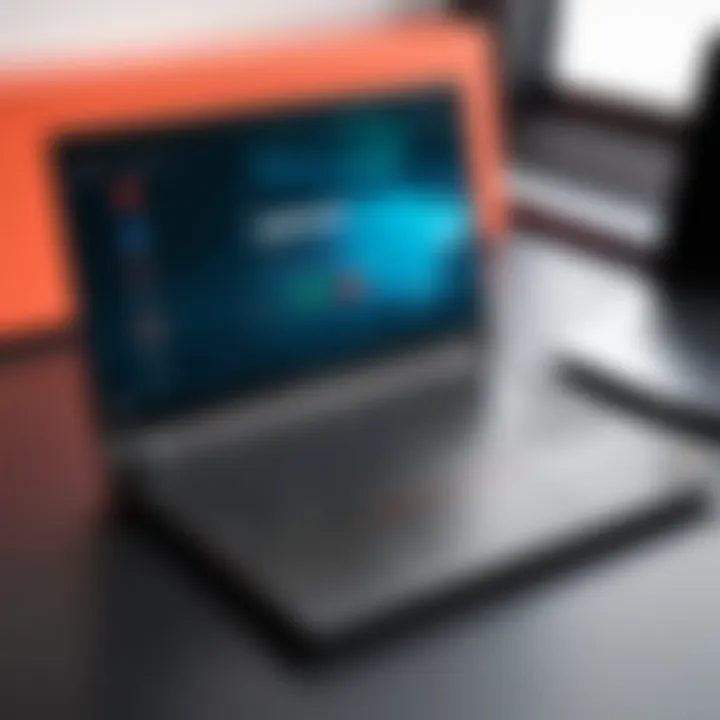
- Display Lighting: Ensure the screen lights up uniformly, with no dead pixels or areas that remain dark.
- Color Vibrancy: The colors should look rich and true; any washed-out areas can signal deeper underlying problems.
- Graphics Rendering: Since this device often gets used for schooling or gaming, watch how it handles dynamic graphics. If it stutters or flickers, there may be a connection issue.
It's often helpful to run a few diagnostic tests designed for screen verification. If you're unsure, websites like Wikipedia offer useful pointers on various testing software that can be run.
Screen Calibration and Adjustments
Once the initial power-on test passes, it’s time to tackle calibration. This is about making sure your touchscreen, display resolution, contrast, and color settings are spot-on, so your experience feels seamless.
- Touch Calibration: Follow the device instructions or use built-in settings to calibrate how it responds to touch. This is particularly important for a Chromebook because many tasks are centered around touch functions.
- Display Settings: Adjust brightness, contrast, and color via the settings menu. You might also want to look into installing specialized color calibration tools. They often give more detailed options for precision tweaking.
- Test in Different Lighting: See how the screen holds up under various light conditions. A screen that’s hard to see in bright sunlight can be a nuisance.
By taking the time to properly test and calibrate your new screen, you ensure a good user experience, which is what you want after putting all that effort into the replacement process. Without these calculations, you could wind up with a device that, though functional, does not deliver the level of performance you’d hoped for.
Common Issues Post-Replacement
Once the daunting task of replacing the screen on your Lenovo 300e Chromebook 2nd Generation has been completed, it's essential to be vigilant about any potential issues that might arise. This stage is often overlooked but should not be brushed aside. Understanding common problems, such as screen flickering and touch response difficulties, can make the difference between a smooth transition to your newly installed screen and a frustrating experience.
Identifying these issues early allows you to take corrective actions promptly, ensuring that your replacement isn't just a temporary fix. Moreover, troubleshooting such problems can foster your skills, paving the way for future repairs or upgrades. So let's delve deeper into these common post-replacement challenges that might sneak up on you.
Screen Flickering
Screen flickering can be one of the most annoying post-replacement issues. The display's unexpected flicker can be a source of irritation and distraction.
Causes of Screen Flickering:
- Connection Issues: If the display cables aren't securely connected, the screen may flicker. It's like a loose thread on your favorite sweater; if it starts to unravel, it impacts the whole thing.
- Outdated Drivers: Sometimes, it's not the hardware at fault but outdated or incompatible software. Check to ensure that your drivers are updated—an easy fix that can resolve many display issues.
- Hardware Malfunctions: In rare cases, the new screen itself may have defects or issues that weren't identified. Testing with another, known-good screen can help rule this out.
How to Fix Screen Flickering:
- Power off the Chromebook and re-check the display connector's seating. Make sure everything is snug and securely in place.
- Update graphic drivers through settings, and restart the device afterward.
- Test with another display to see if the flicker persists. If it does, it might be a deeper issue, possibly requiring professional tech help.
Touch Response Problems
After you're done replacing the screen, touch response should ideally be seamless, but sometimes this is not the case. Several factors can affect how touch input works, from calibration issues to compatibility mismatches.
Common Causes of Touch Response Problems:
- Calibration Issues: If the screen isn’t properly calibrated post-installation, you might find your touch response to be inaccurate or delayed. It’s like trying to steer a ship without a compass—very unsatisfactory.
- Grounding Issues: Sometimes, grounding problems can interfere with touch functionality. Ensure that grounding is correctly established when you’re putting everything back together.
- Compatibility Concerns: It’s vital to use a screen that’s compatible with your model. A mismatch can sometimes lead to touch response failures; similar to using the wrong puzzle piece.
Solutions for Touch Response Problems:
- Go into the settings menu and look for the calibration option. Follow the prompts to re-calibrate the touch input.
- Check the assembly of the screen; sometimes lifting it slightly can help re-establish proper connections.
- In extreme cases, consider performing a factory reset as a last resort. But remember, it’s crucial to back up your files before doing this.
"Identifying and rectifying problems early can save both time and money, turning anxiety into confidence as you navigate through your Lenovo Chromebook modifications."
If you encounter these issues, stay calm; they're often manageable. Understanding the nuances of your device through troubleshooting allows for a richer DIY experience. Remember, tech enthusiasts and electronic aficionados thrive on these challenges, revealing the depth of knowledge one can gain through hands-on experiences.
Maintenance Tips for Longevity
Taking care of your Lenovo 300e Chromebook’s screen is not just about addressing immediate issues; it’s about ensuring that your device remains functional and aesthetically pleasing for the long haul. Screen maintenance can significantly enhance the lifespan of the display and contribute to an overall better performance of the device. With the right procedures and protective measures, you can avoid common pitfalls that lead to screen damage or dysfunction, save money on repairs, and maintain the quality of your user experience.
Cleaning Procedures
A clean screen is essential for both visual clarity and functionality. Dust, dirt, and grime can accumulate quickly, particularly if your Chromebook is often used in environments prone to mess. Here are several tips for effective cleaning procedures:
- Use the Right Materials: Microfiber cloths are your best friend here. They’re gentle and won’t scratch the surface. Avoid paper towels or rough rags, which can leave residue or cause harm.
- Proper Cleaning Solution: Make a mixture of distilled water and white vinegar in equal parts. This solution can cut through grime without causing damage to your screen. Always spray the cloth, not the screen.
- Gentle Cleaning Motion: When cleaning, use a circular motion rather than back and forth. This helps lift dirt instead of pushing it around.
- Frequency: It’s advisable to clean your screen at least once a week. More frequent cleaning might be necessary if you notice buildup or fingerprints.
In cleaning, caution is key. Harsh chemicals can strip protective coatings from your screen. Keep it simple with gentle solutions. Regular upkeep will prevent visibility issues and enhance your overall user experience.
Protective Measures
Once you have a pristine screen, it’s time to think about how to keep it that way. Implementing protective measures can save you a world of trouble down the line. Consider the following points:
- Screen Protectors: A high-quality screen protector could be a game changer. It acts as a barrier against scratches and other minor damages that can occur from everyday use. Options like tempered glass or flexible film can provide different levels of protection.
- Proper Storage: When not in use, store your Chromebook in a case or sleeve. This prevents any accidental bumps or scratches. Maintain a tidy workspace to reduce the risk of dropping items on your laptop.
- Avoid Excessive Pressure: Be cautious about pressing down on your screen when typing or during transport. Keep in mind that excessive force can lead to cracks or other serious issues.
- Be Mindful of the Environment: Avoid exposing your Chromebook to direct sunlight for extended periods, as this can lead to overheating and damage to the screen. Similarly, steer clear of overly humid or hot places.
"An ounce of prevention is worth a pound of cure." This old saying rings especially true when it comes to maintaining your device. Simple protective measures can significantly enhance durability, which is vital for a device heavily used by students and professionals alike.
Taking these steps can prolong the life of your Lenovo 300e Chromebook’s screen and keep it looking new. A little attention can go a long way in preserving not just aesthetic appeal, but also functionality.
Deciding Between DIY and Professional Repair
When faced with the cracked or malfunctioning screen of your Lenovo 300e Chromebook 2nd Gen, the choice between tackling the repair yourself or handing it over to a professional can be daunting. This decision holds considerable weight, as it not only affects your budget but also your time and the outcome of the repair.
In this section, we’ll explore the essential elements that come into play when deciding between a DIY approach or consulting a professional repair service.
Cost Comparisons
Generally speaking, the cost of a repair can sway your decision significantly. DIY repairs often sound appealing due to their lower expenses. If you're looking to replace the screen on your own, you might only need to pay for the replacement screen and a few tools, amounting to approximately $50 to $150, depending on where you source your components.
In contrast, professional repairs can cough up a bill anywhere from $100 to $300. Here’s a deeper look:
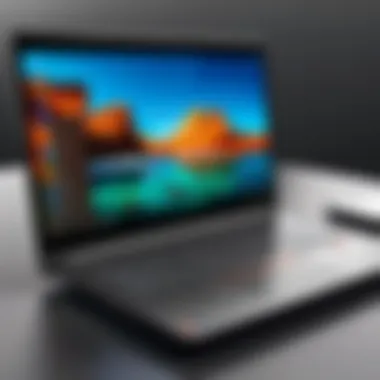
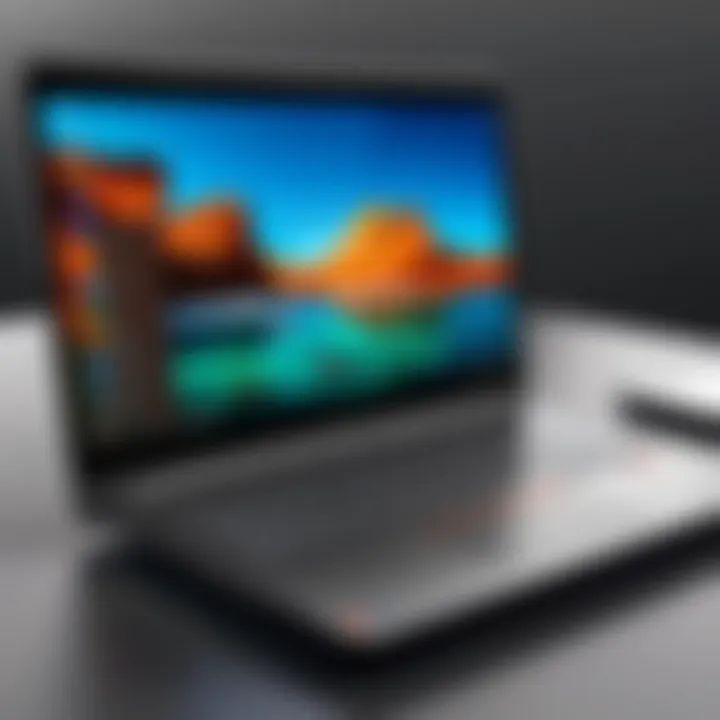
- DIY Costs:
- Professional Service Costs:
- Screen Replacement Kit: $40-$120.
- Tools: $10-$30 (like screwdrivers, a spudger, and more).
- Labor Charges: $50-$150.
- Parts Markup: May vary, typically adding $50-$100.
It's clear that if you're short on cash, going the DIY path can be a lot easier on your wallet, but it does come with its own challenges.
Expertise Required
Now, let’s chat about expertise. When considering a DIY screen replacement, the skill level required can sometimes be underestimated. If you have a decent grasp on electronics and feel at home with tools, then you may find the DIY route to be straightforward. However, if you’re more at home binge-watching series than troubleshooting tech, using a professional may be the way to go.
With some experience in repairs, you might find the process quite manageable. However, lack of experience can lead to mistakes that might cause further damage. Things to think about include:
- Skill in Handling Tools: Can you confidently use electronic screwdrivers, apply pressure correctly without cracking other components, or properly install the screen without forcing it?
- Understanding Instructions: Are you comfortable following technical guides or video tutorials without losing your way?
- Warranty Considerations: Will your DIY approach void any remaining warranty that the device might have?
In summary, weighing the costs versus the required expertise is crucial when deciding between tackling the repair yourself versus hiring a professional.
"In the world of repairs, a bit of caution and a sound judgment can save you a pretty penny or lead you to an even bigger expense."
Ultimately, whether you go DIY or professional boils down to your financial situation and comfort level with tech repairs.
Where to Find Replacement Screens
Finding a reliable source for the Lenovo 300e Chromebook 2nd Gen replacement screens is crucial for ensuring the success of your repair. A well-functioning screen is a fundamental component, and replacing it isn't merely a task; it’s a step into restoring the device to its optimal state. This section will walk you through where you can procure these replacement screens, examining both online and physical options.
Recommended Online Retailers
When it comes to online shopping, there’s no shortage of options for finding a replacement screen. Many retailers have established themselves as go-to sources for electronic parts, but knowing which ones are reliable can save you time and headaches. Here are some trusted online retailers:
- Amazon: Known for its vast inventory, Amazon often has numerous listings for the Lenovo 300e Chromebook screens. Look for sellers with high ratings and favorable customer reviews to snag a quality product.
- eBay: eBay can be a goldmine for not just new parts but also refurbished ones. Be sure to check the seller’s feedback score and read any available reviews.
- iFixit: This site specializes in repair kits and parts for electronics. iFixit is respected in the repair community for its quality parts and detailed guides, providing both the screen and the instructions you might need for installation.
- Newegg: Newegg is well-known for computer components and often stocks replacement screens. You can filter your search to specific Chromebook models to ensure compatibility.
Purchasing online allows you to read reviews and compare prices easily. However, always double-check the return policies so you can return the screen if it doesn't meet your expectations.
Local Repair Shops
If you're not keen on purchasing parts online or prefer seeing what you’re getting in person, local repair shops can be a solid alternative. These establishments can provide personalized service and often have the expertise to ensure you get the right part. Here are some advantages of going local:
- Expert Advice: A technician at a local shop can guide you on the best replacement screen based on your specific needs and usage.
- Immediate Availability: Often, these shops have parts on hand, so you can walk in and walk out with what you need—no waiting for shipping.
- Support Local Business: Supporting local shops contributes to your community's economy.
When searching for local repair shops, keep an eye out for those specializing in Chromebook repairs. You might find dedicated services in electronics stores or independent repair outlets.
"Finding the right parts is half the battle; knowing who to trust is the other half."
Whether you choose to browse online or visit a local shop, knowing where to find quality replacement screens for your Lenovo 300e Chromebook 2nd Gen opens doors to making your repair process smooth sailing.
Epilogue
Wrapping things up, this guide has highlighted just how crucial it is to be well-informed about the screen replacement process for the Lenovo 300e Chromebook 2nd Gen. Understanding the steps involved not only makes the task less daunting but also allows you to tackle it with confidence. There’s a certain satisfaction that comes from being able to repair your own devices, saving both time and money in the process.
The discussion here covered key elements including the tools needed, the step-by-step replacement process, and common issues one might face afterward. Each of these components holds significance, whether you’re a tech enthusiast or merely someone who wants to prolong the life of your device. Plus, knowing how to maintain that new screen ensures it remains in top condition for years to come.
When considering the benefits, one must not overlook the empowerment that comes with DIY repairs. Armed with knowledge, you don’t have to immediately resort to professional repairs. Instead, you can weigh your options with a bit more savvy.
"An educated enthusiast is a powerful one."
Recap of Key Points
- Familiarize with the screen specifications of the Lenovo 300e for an informed replacement.
- Gather the essential tools like screwdrivers and replacement kits to make the process smoother.
- Follow the step-by-step guide to ensure each part is handled correctly, minimizing the risk of damage.
- Troubleshoot common post-replacement issues like screen flickering to ensure optimal performance.
- Adopt routine maintenance tips to enhance the lifespan of the new screen.
Encouragement for Future Repairs
It’s important to take the lessons from this experience and apply them to future repairs you might consider. Once you get the hang of replacing the Chromebooks' screen, you’ll likely find that many other devices can benefit from similar TLC. It’s like riding a bike – once you learn how, you can tackle various types and styles without losing your balance.
Whether it's upgrading hardware in your gaming rig or simply fixing a cracked phone screen, remember that each repair enhances your skills and confidence. The more you repair, the more comfortable you become with technology, opening doors to new possibilities. So, don't shy away from future projects; approach them with the confidence that you’ve already garnered from replacing this screen. It all starts with that first step, and with practice, you’ll find yourself navigating repair tasks with an ease that even pros envy.
Further Reading and Resources
Engaging in the process of screen replacement for the Lenovo 300e Chromebook 2nd Gen isn't just about following a set of instructions; it’s about enriching your knowledge base. This Further Reading and Resources section provides essential links and materials that complement the primary content of this guide. Understanding related topics can enhance your skills and confidence, empowering you to tackle similar repairs or upgrades in the future.
By diving deeper into the intricacies of electronics care and repair, readers can uncover valuable insights, refine their methods, and possibly avoid common pitfalls. This proactive approach goes a long way in extending the lifespan of your device and ensuring it operates at peak efficiency.
Links to Related Articles
Exploring articles related to Chromebook maintenance and repair can illuminate aspects not covered in this guide. Here are a few informative resources:
- Screen Repair Techniques: Learn about different methodologies and materials used in screen repair processes. Such techniques can offer alternative solutions and broaden your understanding. A good article on this can be found on Wikipedia.
- Chromebook Maintenance Best Practices: Articles that discuss general upkeep practices are key to keeping your machine running smoothly. These insights often include regular cleaning tips and software updates, ensuring your device remains in prime condition.
- Common Hardware Issues: Understanding other frequent problems can make you a more adept troubleshooter. Look up articles that detail symptoms and solutions for hardware malfunctions common in Chromebooks.
Having a broad knowledge base can prevent you from facing unexpected challenges during future replacements or repairs.
Video Tutorials and Guides
Sometimes a visual cue makes all the difference. Video tutorials can provide a clear depiction of the processes discussed in this guide. Here are some valuable video resources:
- YouTube Channels: Many tech enthusiasts and professionals share their experiences with repairing Chromebooks, including step-by-step guides that you can mimic. Channels focused on electronics repair often showcase tips and tricks unique to the Lenovo spectrum.
- Instructional Videos: Specific videos dedicated to screen replacements for the Lenovo 300e Chromebook can offer direct insights that might not be covered in written articles. These videos can also show real-life scenarios and troubleshooting methods that you may encounter as you proceed with your repair.
- DIY Repair Shows: Platforms like Facebook and Reddit frequently host DIY repair groups where users can post videos, share experiences, and exchange tips about various repairs, including screens.
Utilizing these resources can enhance your understanding and competence in handling screen replacements effectively. You are not just repairing a screen; you’re building your skill set, contributing to a community of tech enthusiasts, and empowering yourself for future projects.



